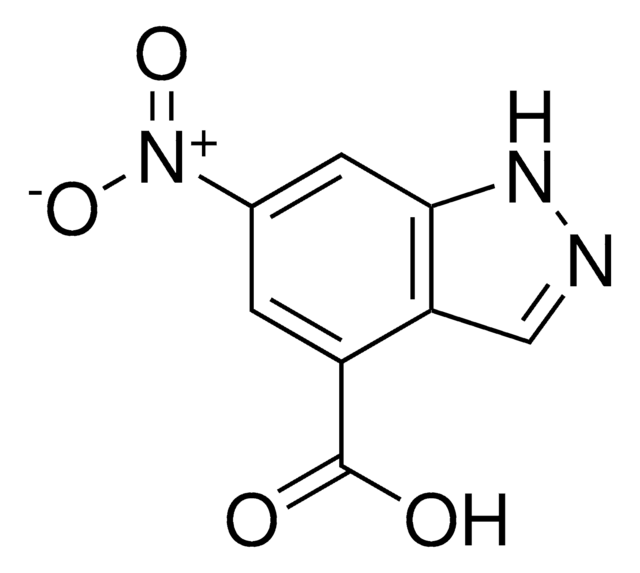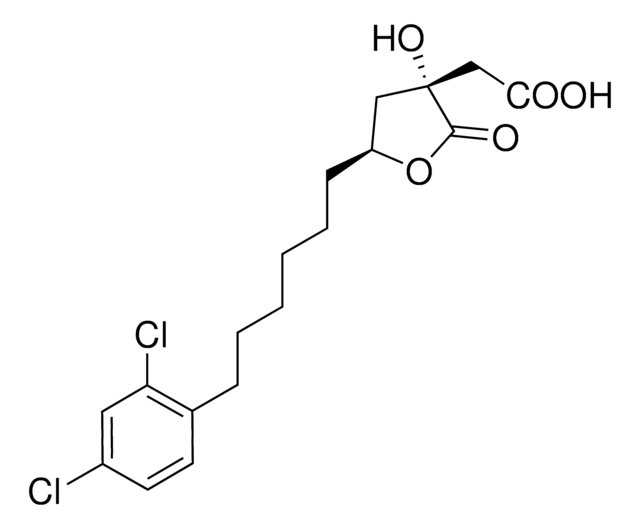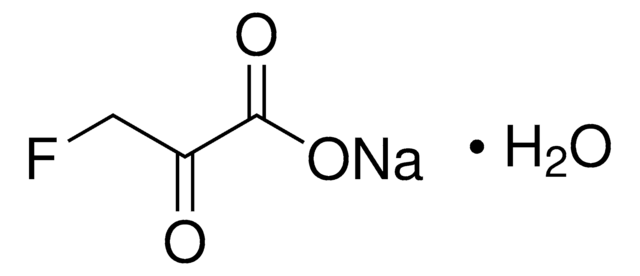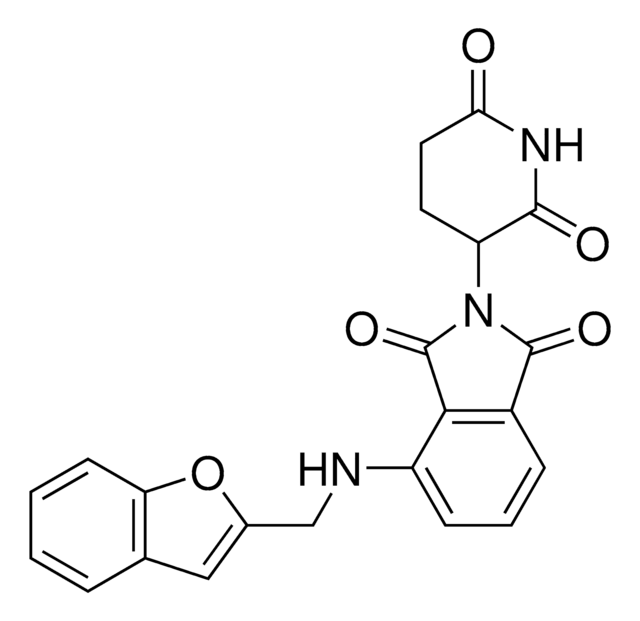SML3650
CTPI-2
≥98% (HPLC)
Sinónimos:
2-(4-Chloro-3-nitrobenzenesulfonamido)benzoic acid, 2-[[(4-Chloro-3-nitrophenyl)sulfonyl]amino]benzoic acid, CTPI 2, CTPI2
Iniciar sesiónpara Ver la Fijación de precios por contrato y de la organización
About This Item
Fórmula empírica (notación de Hill):
C13H9ClN2O6S
Número de CAS:
Peso molecular:
356.74
Número MDL:
Código UNSPSC:
12352200
NACRES:
NA.25
Productos recomendados
Nivel de calidad
Análisis
≥98% (HPLC)
formulario
powder
color
white to beige
solubilidad
DMSO: 2 mg/mL, clear
temp. de almacenamiento
2-8°C
Acciones bioquímicas o fisiológicas
CTPI-2 is a selective mitochondrial citrate transporter (SLC25A1) inhibitor that displays H1299 anti-proliferation activity in a SLC25A1-dependent manner (IC50 <10 μM). When compared with CTPI-1, CTPI-2 exhibits 20-fold higher target affinity (hSLC25A1 KD = 3.5 μM vs. 63.6 μM, respectively) and is ~1000-fold more potent against H1299 sphere-forming capacity. CTPI-2 inhibits mitochondrial respiration and formation of patient NSCLC tumors-derived CSCs spheres in cultures (10-50 μM), as well as suppresses the growth of patent-derived NSCLC exnografts in mice in vivo (28 mg/kg q.o.d. i.p.).
Código de clase de almacenamiento
11 - Combustible Solids
Clase de riesgo para el agua (WGK)
WGK 3
Punto de inflamabilidad (°F)
Not applicable
Punto de inflamabilidad (°C)
Not applicable
Certificados de análisis (COA)
Busque Certificados de análisis (COA) introduciendo el número de lote del producto. Los números de lote se encuentran en la etiqueta del producto después de las palabras «Lot» o «Batch»
¿Ya tiene este producto?
Encuentre la documentación para los productos que ha comprado recientemente en la Biblioteca de documentos.
Terumasa Umemoto et al.
The EMBO journal, 41(8), e109463-e109463 (2022-03-02)
In order to support bone marrow regeneration after myeloablation, hematopoietic stem cells (HSCs) actively divide to provide both stem and progenitor cells. However, the mechanisms regulating HSC function and cell fate choice during hematopoietic recovery remain unclear. We herein provide
Harvey R Fernandez et al.
Cell death and differentiation, 25(7), 1239-1258 (2018-04-14)
Therapy resistance represents a clinical challenge for advanced non-small cell lung cancer (NSCLC), which still remains an incurable disease. There is growing evidence that cancer-initiating or cancer stem cells (CSCs) provide a reservoir of slow-growing dormant populations of cells with
Kexu Xiang et al.
Cell death & disease, 13(7), 641-641 (2022-07-23)
Oncogenic mutations in metabolic genes and associated oncometabolite accumulation support cancer progression but can also restrict cellular functions needed to cope with DNA damage. For example, gain-of-function mutations in isocitrate dehydrogenase (IDH) and the resulting accumulation of the oncometabolite D-2-hydroxyglutarate
Nuestro equipo de científicos tiene experiencia en todas las áreas de investigación: Ciencias de la vida, Ciencia de los materiales, Síntesis química, Cromatografía, Analítica y muchas otras.
Póngase en contacto con el Servicio técnico







